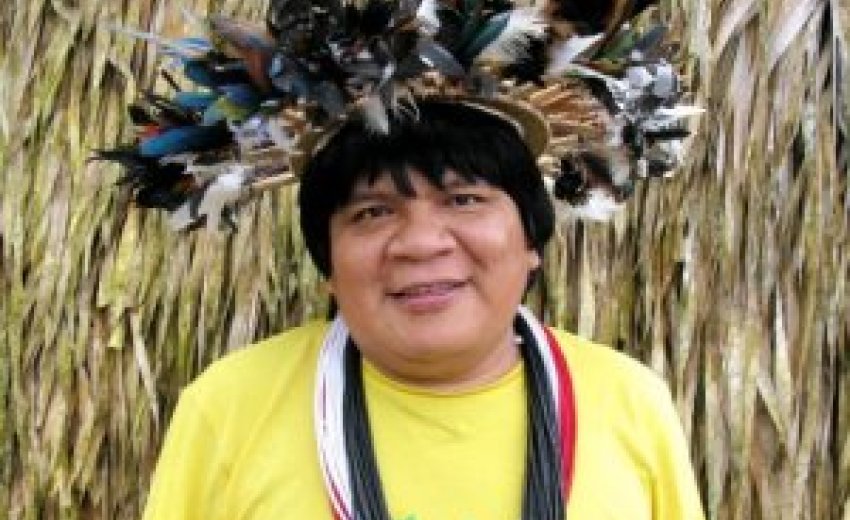Part 3: 'An Email from the Heart of the Rainforest'
 |
Standing among the Surui, his arms pockmarked with mosquito bites, is a man from Switzerland; Thomas Pizer, from the Aquaverde organization. Pizer recalls how he received an e-mail from Almir Surui six years earlier. The message read: "On your website it says you are involved in the reforestation of the Amazon. If that is true, please help us." Word documents and Excel tables were attached to the e-mail. "I was being sent Excel tables from the heart of the rainforest!" Pizer says with a laugh. He wired the Surui enough money for 500 seedlings. They planted 1,900. "No other indigenous people in all of Brazil has done this much for the revival of their forests," he says.
So far, the Surui have planted 120,000 trees. Another 40,000 are planned to be added this year. Yet despite all their efforts, they are still a long way from Almir's dream of a million new trees -- partly because of persistent attempts at illegal logging. Almir pulls out a piece of paper and sketches the Surui reservation. Next to it he draws a circle. "The authorities gave the loggers a license to cut down trees in this area," he explains, pointing to the circle. "But there are no trees left there anymore, so they come into our reservation and then claim the trees were cut down legally."
An Indio Visits Google Inc.
Only last week he caught some illegal loggers as they were about to make off with three truckloads of mahogany. The trucks belonged to the regional authorities in the neighboring state of Mato Grosso. "The mayor is involved. That's typical around here," Almir says. He's lost faith in the Brazilian government and in its plan to slash logging by 80 percent by the year 2020. Almir Surui, the chief from the rainforest, now only believes in the power of knowledge.
 |
They shot a video for YouTube, built a website and learnt the meaning of words like "blog", "overlay", and "3D". They even invented a word for Google in their own language, Tupi-Monde: "ragogmakan." It translates literally as the messenger, because Google carries the message of the Surui and their plan out into the world.
Scanning Googles for Intruders
The chief hopes to fully digitize the reservation one day. They're already working on the first step: They want to integrate a self-produced map of their forest into Google Earth, where people will be able to consult photos, take a virtual flight over the reservation, and watch videos of the tribal elders talking about their traditions. Meanwhile in a palm-leaf hut down on the forest floor, Surui will sit at computers scanning high-resolution satellite images of their forest inch by inch to detect intruders, pictures that the Chinese-Brazilian CBERS III satellite will soon be supplying.
Until then, they must make do with satellite pictures on Google Earth. Despite their poor resolution, the pictures were good enough to identify dozens of places in which wood poachers and gold prospectors have penetrated and been driven out again. Many tons of wood have been confiscated. It has been a taste of things to come, of the future that will hopefully come in October when the Surui will engage in global emissions trading.
Almir Surui first heard the term REDD -- or "retchy", as he pronounces it -- three years ago. The acronym stands for Reducing Emissions from Deforestation and Forest Degradation. He discovered that forests trap carbon dioxide, and companies around the globe are willing to pay a lot of money to have the trees soak up carbon dioxide on their behalf. They don't pay for a forest that is merely in existence, but rather for preventing its destruction.
* Part 1: How an Amazonian Tribe Is Mastering the Modern World
* Part 2: Two Worlds
* Part 3: 'An Email from the Heart of the Rainforest'
* Part 4: Forest Could Vanish by 2100

